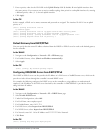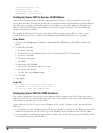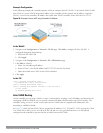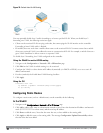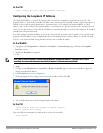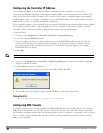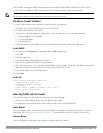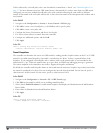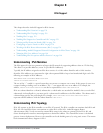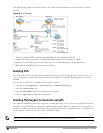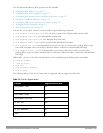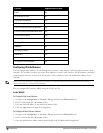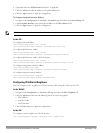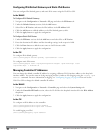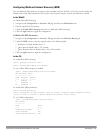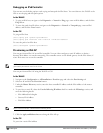
DellPowerConnectW-SeriesArubaOS6.2 | User Guide IPv6Support | 128
Chapter 8
IPv6 Support
This chapter describes ArubaOS support for IPv6 features.
l "Understanding IPv6 Notation" on page 128
l "Understanding IPv6 Topology" on page 128
l "Enabling IPv6" on page 129
l "Enabling IPv6 Support for Controller and APs" on page 129
l "Filtering an IPv6 Extension Header (EH)" on page 136
l "Configuring a Captive Portal over IPv6" on page 136
l "Working with IPv6 Router Advertisements (RAs)" on page 136
l "Understanding ArubaOS Supported Network Configuration for IPv6 Clients" on page 140
l "Managing IPv6 User Addresses" on page 146
l "Understanding IPv6 Exceptions and Best Practices" on page 146
Understanding IPv6 Notation
The IPv6 protocol is the next generation of large-scale IP networks by supporting addresses that are 128 bits long.
This allows 2
128
possible addresses (versus 2
32
possible IPv4 addresses).
Typically, the IP address assigned on an IPv6 host consists of a 64-bit subnet identifier and a 64-bit interface
identifier. IPv6 addresses are represented as eight colon-separated fields of up to four hexadecimal digits each. The
following are examples of IPv6 addresses:
FEDC:BA98:7654:3210:FEDC:BA98:7654:3210
1080:0:0:0:0:800:200C:417A
The use of the “::” symbol is a special syntax that you can use to compress one or more 16-bit groups of zeros or to
compress leading or trailing zeros in an address. The “::” can appear only once in an address. For example, the
address, 1080:0:0:0:0:800:200C:417A can also be represented as 1080::800:200C:417A.
IPv6 uses subnet identifiers to identify subnetworks to which nodes are attached. In ArubaOS, when you refer IPv6
subnetworks in firewall policies, you must specify a subnet mask in addition to the IPv6 address. The subnet mask is
a bitmask that specifies the prefix length. For example, 1080::800:200C:417A ffff:ffff:ffff:ffff::
represents all IPv6 addresses with the subnet identifier 1080:0:0:0.
Understanding IPv6 Topology
IPv6 APs connect to the IPv6 controller over an IPv6 L3 network. The IPv6 controller can terminate both IPv4 and
IPv6 APs. IPv4 and IPv6 clients can terminate to either IPv4 or IPv6 APs. ArubaOS supports Router
Advertisements (RA). You do not need an external IPv6 router in the subnet to generate RA for IPv6 APs and
clients that depend on stateless autoconfiguration to obtain IPv6 address. The external IPv6 router is the default
gateway in most deployments. However, the controller can be the default gateway by using static routes. The master-
local communication always happens in IPv4.



